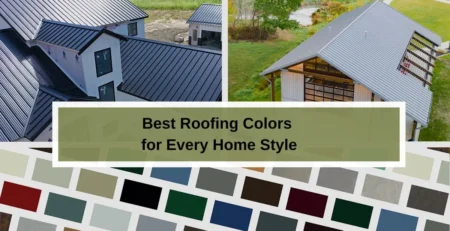Ice and Water Shield What is it and Where Does it Go?
Ice and Water Shield is a waterproof membrane that adheres directly to your roof deck. It seals nail holes, stops water penetration, and protects your home from wind-driven rain and ice dams. Installed correctly, it prevents costly leaks and structural damage.
What Is Ice and Water Shield?
Ice and Water Shield is a self-adhering membrane made from rubberized asphalt or modified bitumen. It comes in rolls with a peel-away backing that exposes a sticky side to bond to your roof deck. Unlike standard underlayment, it seals tightly around nail penetrations and remains flexible even in freezing temperatures. Once installed, it forms a watertight barrier at your roof’s most vulnerable areas.
Why Is Wind-Driven Rain a Problem?
Wind-driven rain blows sideways under strong winds, easily slipping beneath shingles and into roof edges, valleys, and wall junctions. Over time, this leads to rotted sheathing, mold growth, and interior leaks. Ice and Water Shield protects these critical zones by creating a sealed layer that prevents rainwater from sneaking under roofing materials.
How Do Ice Dams Cause Roof Leaks?
Ice dams form when melted snow refreezes at the eaves, creating a wall of ice that traps water behind it. This water backs up under shingles, soaking into your roof deck and insulation. Standard underlayment can’t stop this seepage. Ice and Water Shield seals directly to the deck, protecting eaves and valleys so meltwater drains off safely without leaks.
What Is Ice and Water Shield Made Of?
Ice and Water Shield has two main layers:
- Top layer: Tough rubberized asphalt or modified bitumen, resistant to tears and punctures.
- Bottom layer: Fire-resistant adhesive protected by a release film. When rolled out, the film peels away and the adhesive bonds to the wood deck, sealing tightly around fasteners.
The material remains flexible in freezing conditions and withstands sun, rain, and wind exposure for limited periods before shingles are installed.
Where Should Ice and Water Shield Be Installed?
Install Ice and Water Shield in high-risk areas, including:
- Along eaves and rake edges (at least 3 feet inside exterior walls)
- Roof valleys where two slopes meet
- Around chimneys, skylights, and roof penetrations
- Roof-to-wall transitions
- Low slope or nearly flat roof sections
- Near gutters, downspouts, and drainage channels
This targeted application prevents water damage where leaks are most likely to occur.
How to Install Ice and Water Shield
Follow these installation steps for a leak-proof seal:
- Ensure the roof deck is clean and dry.
- Start installation at the lowest point (eave or rake).
- Peel away the release film as you roll out the membrane.
- Overlap side edges by 2 inches and end laps by 4 inches.
- Press firmly with a roller to ensure full adhesion.
- Use cap nails (not staples) outside overlap zones for temporary hold.
- Align tightly against drip edges, wall flashing, and valleys.
- Cut around vents, chimneys, and pipes, then seal the edges carefully.
Never install Ice and Water Shield over wet wood, as trapped moisture can cause mold and rot.
Should You Cover the Entire Roof?
Full roof coverage with Ice and Water Shield is generally unnecessary and costly. Most building codes require it only in specific zones like eaves and valleys. However, full coverage is beneficial in:
- Coastal hurricane-prone regions
- Mountainous snowy areas
- Areas with frequent wind-driven rain
Consult local codes and a professional roofer to determine the right coverage for your climate.
Common Questions
Can I install Ice and Water Shield myself?
Yes, but roofing is dangerous work. Professionals ensure proper installation, layering, and sealing for maximum protection.
Can it be installed in the rain?
No. The roof deck must be completely dry to achieve a secure bond.
How long can it be left exposed?
Most brands allow up to 60 days of exposure, but it’s best to cover with shingles as soon as possible.
How much do I need?
Calculate total lengths of eaves, rakes, valleys, and critical areas. Multiply by the width (usually 36 inches) to get square footage, then divide by the coverage per roll. Always buy at least 10% extra for overlaps and waste.
Is it needed under metal roofs?
Yes, especially a high-temperature Ice and Water Shield, as metal heats up more than shingles.
Does it really work?
Absolutely. Ice and Water Shield has proven to protect homes in Toledo and other harsh climates against leaks from ice dams, snow melt, and wind-driven rain.














